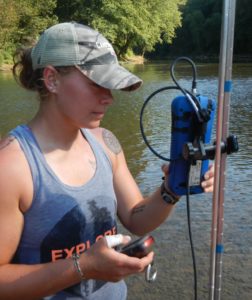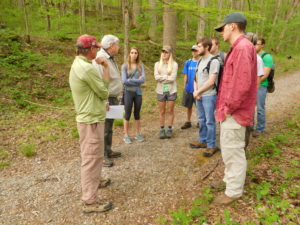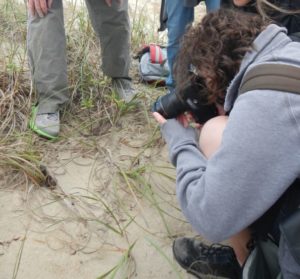A Rich Learning Landscape
Imagine a learning environment where theory, process and example leap off the page as you participate in labs, field excursions or research projects at Campbellsville University’s own Clay Hill Memorial Forest (CHMF) or the nationally recognized Green River.
CHMF is a 305-acre educational and research woodland that is managed by Campbellsville University as a regional center for environmental education and research on eastern deciduous forests. The site is used for field labs for courses such as ecology, entomology, ornithology and conservation biology. Many students conduct or assist with undergraduate research projects at the Forest.
Numerous state, federal and non-governmental organizations are involved in efforts to better understand and more effectively manage this resource for future generations. CU students are often exposed to the work of these partners and to the river ecosystem through classes like Ichthyology, Conservation Biology, or Environmental Chemistry.
Numerous students have conducted or assisted with undergraduate research associated with the Green River. Many upper division environmental science students qualify to participate in the Field Studies in Biology courses which offer opportunities to study topics like Tropical Ecology, Coastal Biology, or Natural History of the Upper Green River. These topical studies include a chance for the student to further immerse themselves in the subject matter with visits to sites like the University of Puerto Rico Field Station and the El Yunque National Rainforest or the University of Georgia’s Sapelo Island Field Station and National Estuarine Research Reserve or extended visits into the upper Green River watershed including Clay Hill Memorial Forest and Mammoth Cave National Park.

CU alum Victoria Decker collecting data on the Green River at Mammoth Cave National Park.
What is an Environmental Scientist?
Environmental scientists are problem solvers who use a unique set of skills to assess the complex interactions between humans and their environment and provide sustainable solutions regarding the use of air, land and water resources. Careers vary widely and range from environmental consultants, environmental policy makers, wildlife biologists, ecologists, environmental biologists, conservation biologists, or environmental technicians and engineers. Most environmental scientists work for government agencies, non-profit organizations or industry. Our program integrates the biological, physical and social sciences as well as a number of electives from which students can choose based on their specific interests within the field of study.

Environmental Ethics class with Dr. William H. Martin at Great Smoky Mountains National Park.
What Have our Students Done?
Students in the CU Environmental Science Program and/or participants in the CUES Internship Experience have gone on to pursue graduate studies in such varied fields as environmental policy, marine ecology, environmental health and environmental science. Others have gained employment with entities such as the U.S. Army Corps of Engineers, National Park Service, United States Fish and Wildlife Service, and the Kentucky Department for Environmental Protection, non-profit environmental organizations and the toxicology industry.

